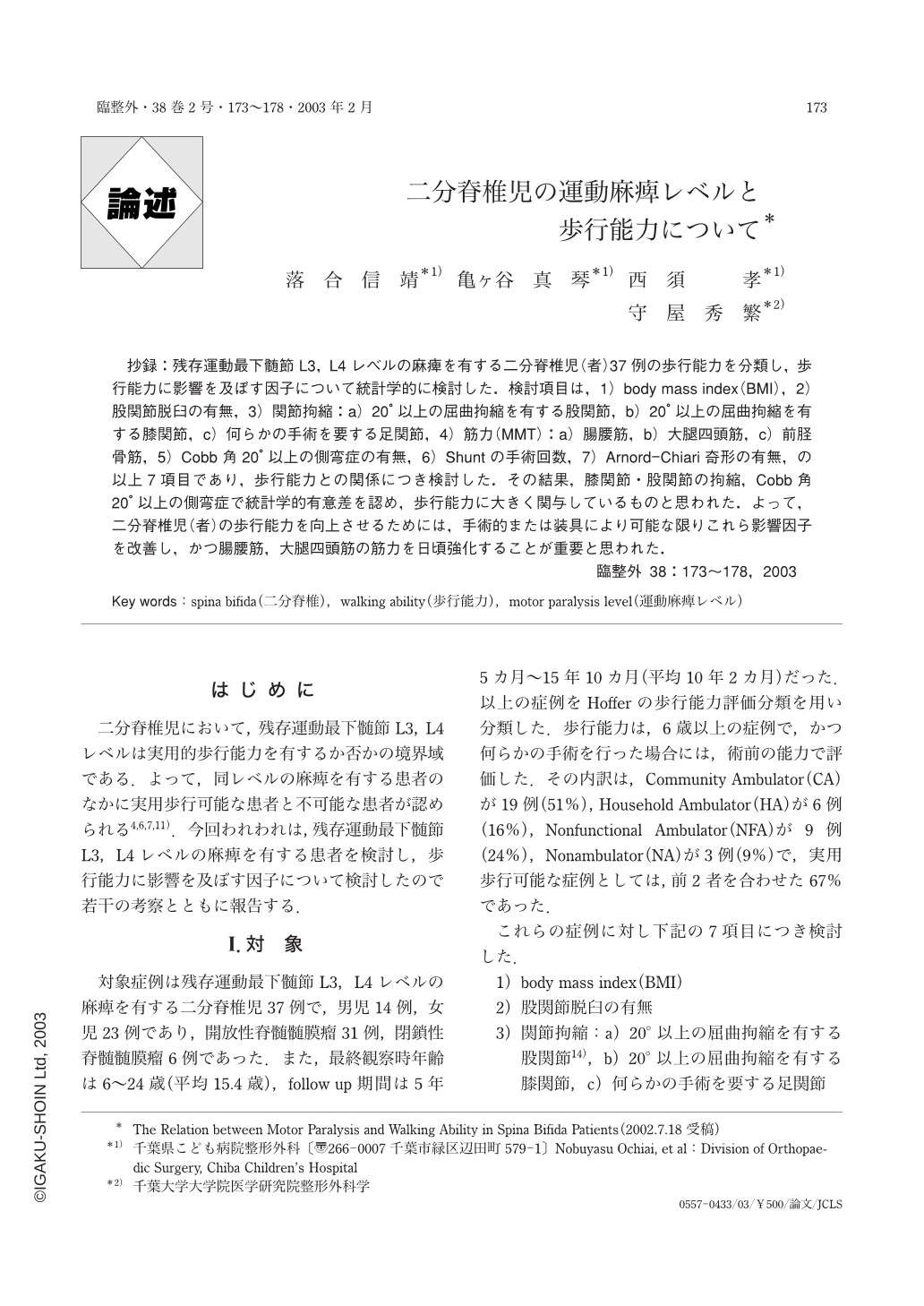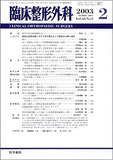Japanese
English
- 有料閲覧
- Abstract 文献概要
- 1ページ目 Look Inside
抄録:残存運動最下髄節L3,L4レベルの麻痺を有する二分脊椎児(者)37例の歩行能力を分類し,歩行能力に影響を及ぼす因子について統計学的に検討した.検討項目は,1)body mass index(BMI),2)股関節脱臼の有無,3)関節拘縮:a)20°以上の屈曲拘縮を有する股関節,b)20°以上の屈曲拘縮を有する膝関節,c)何らかの手術を要する足関節,4)筋力(MMT):a)腸腰筋,b)大腿四頭筋,c)前けい骨筋,5)Cobb角20°以上の側弯症の有無,6)Shuntの手術回数,7)Arnord-Chiari奇形の有無,の以上7項目であり,歩行能力との関係につき検討した.その結果,膝関節・股関節の拘縮,Cobb角20°以上の側弯症で統計学的有意差を認め,歩行能力に大きく関与しているものと思われた.よって,二分脊椎児(者)の歩行能力を向上させるためには,手術的または装具により可能な限りこれら影響因子を改善し,かつ腸腰筋,大腿四頭筋の筋力を日頃強化することが重要と思われた.
We classified the walking ability of 37 children with spina bifida (open myelomeningocele in 31;closed myelomeningocele in 6) who had L3 or L4 level motor paralysis into the four groups described by Hoffer. The results of the classification were 19 community ambulator cases, 6 household ambulator cases, 9 nonfunctional ambulatory cases, and 3 nonambulator cases. The relationship between the following factors and the children's walking ability was analyzed statistically:1)body mass index, 2)hip joint status (dislocated or not), 3)joint contracture of the hip joints (more than 20 degrees), knee joints (more than 20 degrees), and ankle joints (requiring surgery), 4)muscle strength (manual muscle testing):iliopsoas muscles, quadriceps muscles, and tibialis anterior muscles, 5)scoliosis (Cobb angle≧20 degrees), 6)number of shunt operations,and 7)Arnold-Chiari deformity. The results showed that contractures of the knee and hip joints, muscle power of the iliopsoas and quadriceps muscles, and scoliosis had the greatest impact on their walking ability. We concluded that surgical intervention to release joint contratures and muscle exercise to improve muscle strength are required to improve the walking ability of children with spina bifida.

Copyright © 2003, Igaku-Shoin Ltd. All rights reserved.


